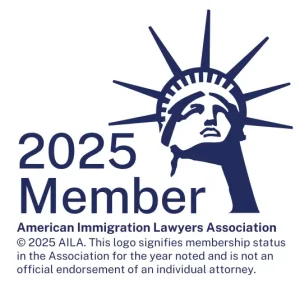As a Montana immigration attorney with nearly 30 years of experience helping farmers, ranchers, and ag businesses navigate the H-2A visa program (starting my practice in September 1996), I’ve seen firsthand how seasonal labor shortages can grind operations to a halt. Montana’s vast ranches and farms often need extra hands for planting, harvesting, fencing, or soil preparation—but what if you’re not just hiring for your own land? What if you provide those services to neighbors or other operators?
Enter the H-2A labor contractor role. If you’re an ag service provider lending workers to third parties, you must register as a Farm Labor Contractor (FLC) under the H-2A program. This isn’t just red tape—it’s a safeguard rooted in history. In this article, we’ll break down:
- Why become an H-2A labor contractor (versus hiring directly for your own farm).
- Key qualifications and requirements (with real-world Montana examples).
- The historical context behind these rules.
- How my firm can handle the entire application process for you.
Whether you’re prepping soil for seeding across multiple ranches or sharing fencing crews, this guide will help you comply and thrive.
Direct H-2A Hiring vs. Becoming a Labor Contractor: What’s the Difference?
The H-2A program allows U.S. employers to hire foreign workers for temporary agricultural jobs when domestic labor is unavailable. But the rules split based on who the workers serve:
- Direct Employer (For Your Own Operations): If you need workers solely for your farm or ranch—say, to build fences on your 500-acre spread or plant wheat on your fields—you file as a standard H-2A employer. No extra contractor registration needed.
- H-2A Labor Contractor (For Third-Party Services): If you supply workers to others—even lending a crew to a neighbor for hay baling or providing custom harvesting services—you’re acting as a labor contractor. This triggers mandatory registration with the U.S. Department of Labor (DOL) as a Farm Labor Contractor under the Migrant and Seasonal Agricultural Worker Protection Act (MSPA).
Why make the switch? As a contractor, you can:
- Expand your business by offering “crew-for-hire” services.
- Help neighboring operations without them navigating H-2A paperwork.
- Charge fees for labor management, turning seasonal help into year-round revenue.
But skip registration, and you risk fines up to $2,500 per violation, worker backpay claims, or program debarment.
Real Montana Examples
- Fencing Crew Lender: You hire 10 H-2A workers to fence your ranch. Your neighbor needs the same? Lend them out—you’re now a contractor.
- Soil Prep Provider: Your team does tillage and seeding on your land. Offer it to nearby farms for a fee? Contractor status required.
- Custom Harvesting: Running combines for multiple ranches? Definitely a labor contractor.
How to Qualify as an H-2A Labor Contractor: Step-by-Step Requirements
Qualifying isn’t overly complex, but it demands proof of reliability. You’ll file Form ETA-9142A with the DOL, plus MSPA registration via Form WH-530. Key hurdles:
- Prove Business Legitimacy:
- Articles of incorporation or DBA registration.
- Proof of ag focus (e.g., equipment lists, client contracts).
- Vehicle Safety Inspections:
- All transport vehicles must pass DOL-authorized inspections.
- Example: Your crew van needs valid brakes, seats, and insurance. In Montana, use certified mechanics—I’ve helped clients coordinate with local shops in Billings or Bozeman.
- Bonding or Insurance:
- Minimum $5,000 surety bond (up to $75,000 based on crew size) to cover wage disputes.
- Example: For 20 workers, expect a $20,000 bond. We shop affordable providers for Montana clients.
- Housing and Wage Compliance:
- Provide DOL-approved housing (inspected rentals or on-site units).
- Pay at least the Adverse Effect Wage Rate (AEWR)—in Montana for 2025, that’s $18.67/hour.
- Guarantee 75% of contract hours and cover inbound/outbound travel.
- Worker Disclosures:
- Written statements in workers’ languages detailing pay, hours, and rights.
- No recruitment fees charged to workers.
Timeline: 60-75 days before need date. File early—Montana’s spring planting waits for no one!
Learn H-2A basics for direct farm hiring
H-2A Labor Contractor Process Flowchart
The Bracero Program Legacy: Why These Rules Exist
I’m old enough to remember stories from the Bracero Program (1942-1964), which brought millions of Mexican guest workers to U.S. farms. It filled WWII labor gaps but spawned abuses: substandard housing, wage theft, and exploitative contractors who deducted phony fees.
When Bracero ended amid scandals, Congress passed MSPA in 1983 to protect workers. Today’s H-2A contractor rules—bonds, inspections, disclosures—stem directly from that era. They’re not “government meddling” for its own sake; they’re lessons learned to prevent history’s repeats. In Montana, where workers travel remote roads, vehicle safety alone has saved lives.
How We Can Help: Full-Service H-2A Filing
At the Law Office of Raymond G. Lahde, we don’t just advise—we do the work:
- Audit your operations for contractor eligibility.
- Prepare and file all forms (ETA-9142A, WH-530, recruitment plans).
- Secure bonds, housing certifications, and prevailing wage data.
- Represent you in DOL audits or appeals.
We’ve filed dozens of successful H-2A petitions for Montana ag clients, from direct ranch hires to multi-farm contractors. Contact us for a free consultation—let’s get your crew here legally and on time.

